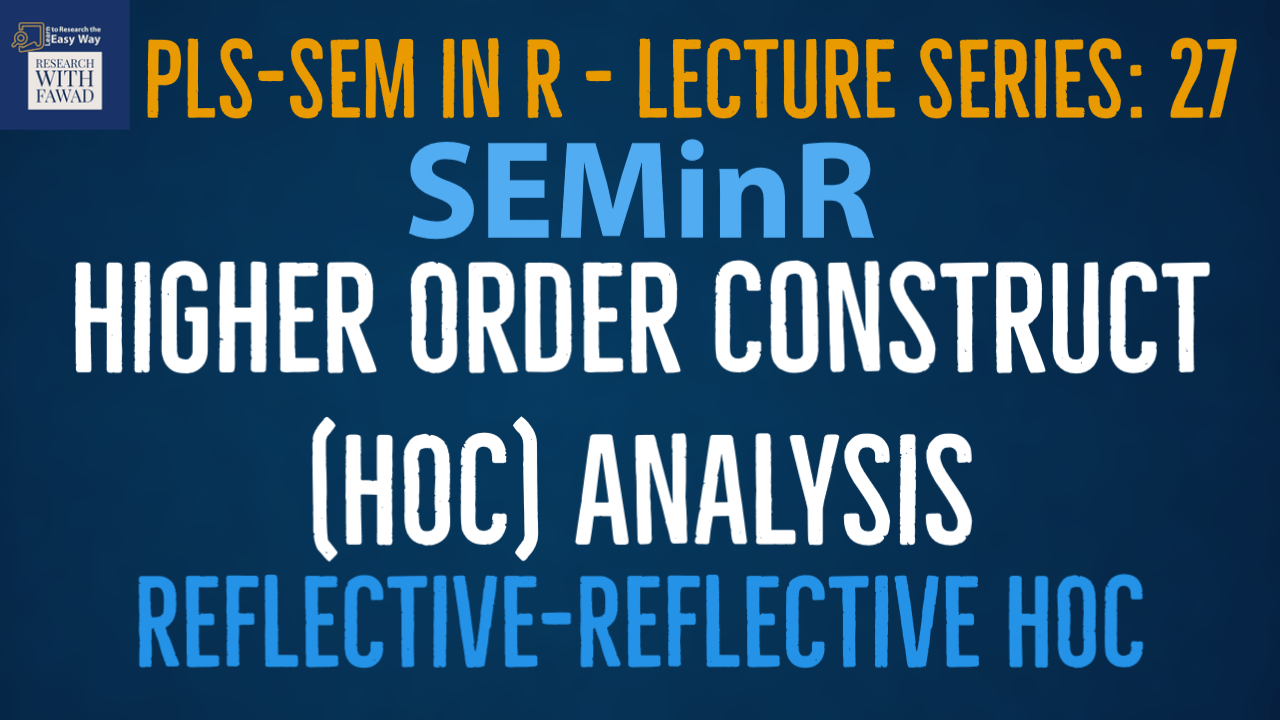
SEMinR Lecture Series
This session is focused on validate and estimate Higher Order Constructs using SEMinR in Cran R

This session is focused on validate and estimate Higher Order Constructs using SEMinR in Cran R
A widely debated Hierarchical Component Model (HCM) configuration is the reflective-reflective type. Critics argue that this type of HCM does not exist, or that it is meaningless because the reflective measures should be unidimensional and conceptually interchangeable. This conflicts with the view held by others that multiple underlying dimensions are distinct in nature.
A Reflective-Reflective Higher Order model is assessed in two stages.
Reference
Sarstedt, M., Hair Jr, J. F., Cheah, J. H., Becker, J. M., & Ringle, C. M. (2019). How to specify, estimate, and validate higher-order constructs in PLS-SEM. Australasian Marketing Journal (AMJ), 27(3), 197-211.
Hair Jr, J. F., Hult, G. T. M., Ringle, C. M., Sarstedt, M., Danks, N. P., & Ray, S. (2021). Partial Least Squares Structural Equation Modeling (PLS-SEM) Using R: A Workbook.
The tutorials on SEMinR are based on the mentioned book. The book is open source and available for download under this link.